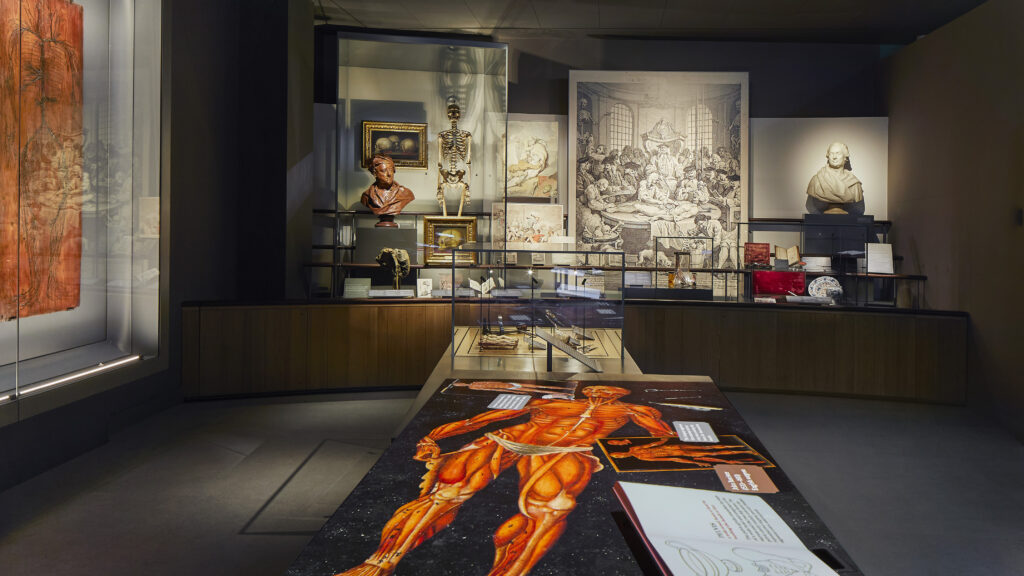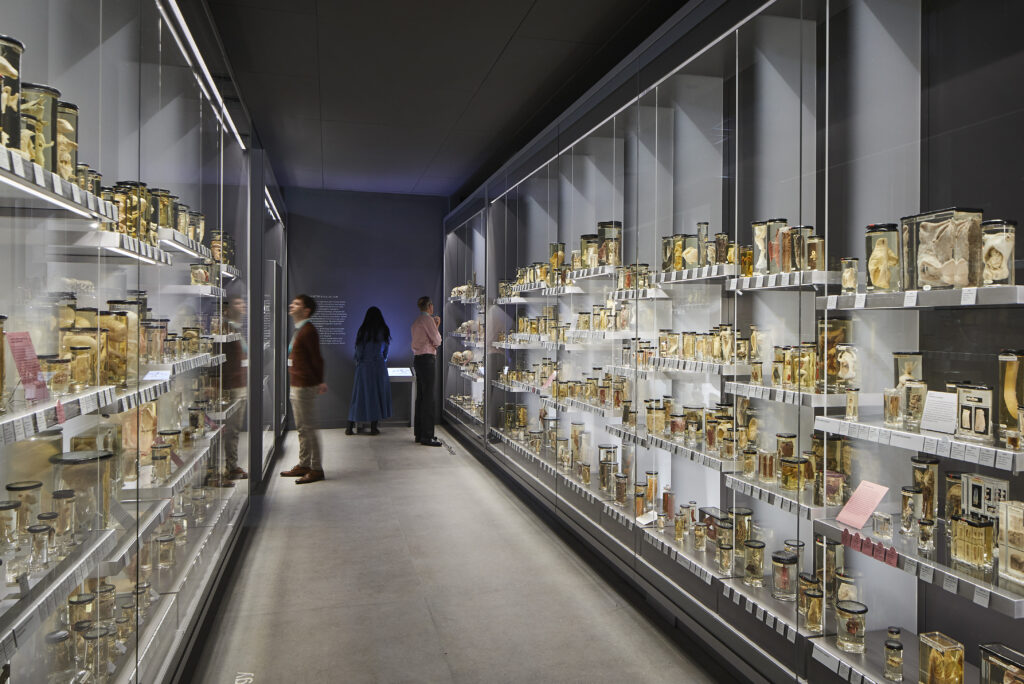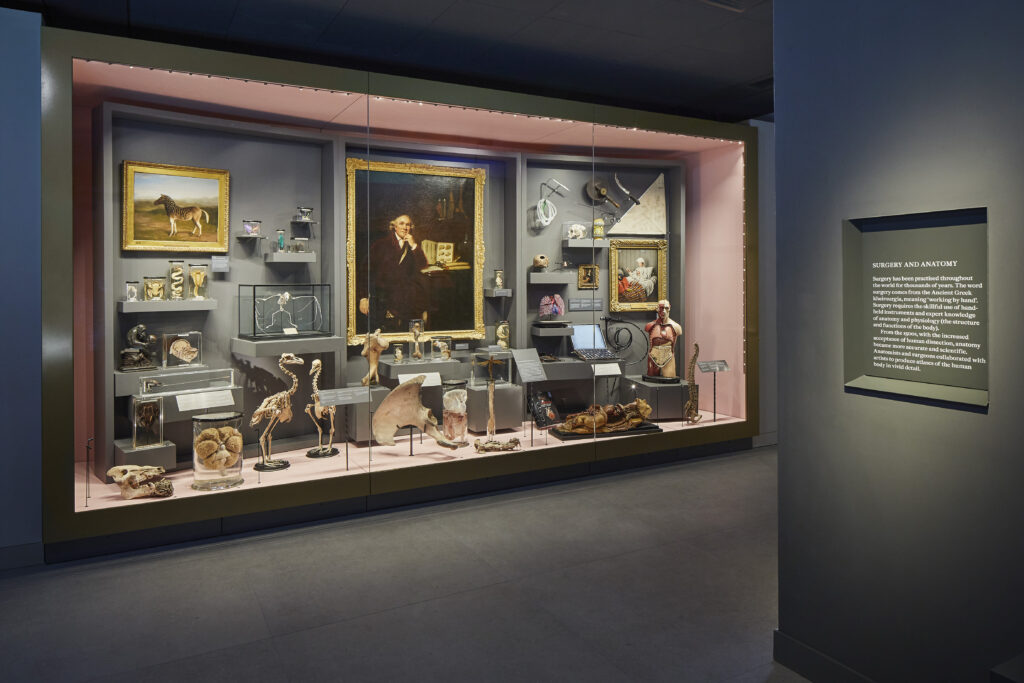Enjoy this article?
Most Museums Journal content is only available to members. Join the MA to get full access to the latest thinking and trends from across the sector, case studies and best practice advice.
As a disabled person who researches the display of disabled human remains in museums, the reopening of the Hunterian in May, after a six-year, £4.6m redevelopment, was something I had awaited with both anticipation and dread.
I will never feel comfortable in medical museums. They are spaces built on the exploitation of disabled people displayed as specimens and curiosities. This is something many disabled people today see echoes of, from invasive everyday staring to being treated like a medical oddity.
On entering the Hunterian Museum’s first gallery, there is a content warning for human remains – also on the map – but this warning is mere metres away from remains you can see from outside of the gallery. A prior warning at the reception desk would be more sensitive and inclusive.
Most displays are at wheelchair accessible height, many with space underneath for my manual chair. Some text panels are difficult to read due to light reflections, being angled poorly or obscured by objects.

Several panels have small, fine, white text – difficult to read if visually impaired or dyslexic, and low lighting makes this worse.
To summarise the museum’s basic accessibility credentials, it is step-free, but sections are susceptible to bottlenecks if lingering there in a wheelchair, particularly in the Long Gallery. There is no quiet space or sensory area, but folding stools are available throughout and there are also five benches.
The museum is a one-way route, making wayfinding easy and creating a good visitor flow through the space.
There is one wheelchair-accessible toilet and another with grab bars, and all toilets are gender-neutral. There is no Changing Places toilet, and considering the redevelopment, this feels like a missed opportunity.
There is an audio tour, and the museum’s website states an app is coming soon with full audio and text for the museum. The museum also has an induction loop, and all audiovisual displays are subtitled. Some of this is on the museum’s access page, although this does not include all of the key information needed.
While the content of the museum may not be suitable for younger children, the galleries are filled with informative, engaging text panels as well as interactive displays and videos. This makes the space appealing to a range of visitors, but particularly those with an interest in medical history.
The Hunterian Museum is named after the 18th-century surgeon and anatomist John Hunter (1728-93) who was a collector of anatomical preparations of humans and animals alike, as well as paintings, models, archive material and various medical instruments.

The museum has used Hunter’s original collection to tell the story of surgery from ancient times to the latest robot-assisted operations.
Curated chronologically, it starts with an introduction to the collection, moving through the earliest instances of surgery to Hunter’s career as a surgeon and comparative anatomist, the display of his collection while he was alive, and then the progression of surgery to where it is today.
It ends with what I thought was the most impactful section – a video that features a variety of surgical patients who each tell their life-changing stories, as well as their doctors telling their side, including a woman called Jennifer who had a heart transplant. Her heart is now on display after she donated it to the museum.
This is a poignant ending after walking through a museum that displays hundreds of human remains, most from people who never consented to being on display.
Hunter received thousands of stolen bodies over his life from grave robbers, who often took the bodies of poor people because their graves were shallower, and targeted individuals based on disabilities or bodily differences.
While the museum acknowledges the collection wouldn’t exist without grave-robbing, it seems amiss not to discuss the specific targeting of disabled bodies.
The identities of some individuals are known, and their lives are highlighted in a brilliant section. The Hunterian has made a great decision to humanise individuals who previously would have been displayed as nameless specimens.
However, it feels jarring after moving through the Long Gallery, which displays hundreds of specimens from Hunter’s collection presented very much as a teaching collection. That means most remains have little more than a collection number and a descriptor of the body part or pathology.
Many of these individuals in the museum may not have been identified due to the historical lack of records – intentional erasure of identities after bodies were stolen was common by anatomists like Hunter.
The first panel in the Hunterian acknowledges the unnamed individuals forming the collection, but this could have been further explored throughout the galleries.

I feel more also could have been done to humanise the unnamed disabled individuals whose body parts are on display, through consideration of their lived experiences.
This would help move away from a medicalised model of disability to the social model, allowing people who likely never expected or wanted their remains to end up on display to keep their humanity beyond death.
An interesting section was the panel on Charles Byrne (1761-1783), who became famous for his exceptional height and entertained crowds as “The Irish Giant”. Byrne requested to be buried at sea, but was stolen from his coffin by Hunter.
His body is no longer on display at the Hunterian after calls for its removal, but it remains in the collection and can still be viewed by medical students.
However, the decision to remove Byrne’s body from display is undercut by the display in the same cabinet of the skeleton of “Mr Jeffs”.
He probably had a combination of two rare conditions – neurofibromatosis (Joseph Merrick, famed as the Elephant Man in the 19th century, was diagnosed with this) and Proteus syndrome. His daily life would have been made difficult due to increasing immobilisation over time.
So, considering that Byrne is not there, but Jeffs is, why does the display of one disabled person differ from another? Is it because we know less about Jeffs’ life? Did he donate his body to science? Could there be a better way to focus on how his life might have been affected by this condition without displaying his remains?
There is some acknowledgement of colonialism, discussing the animal specimens gathered by colonial “exploration”, and notable people whose portraits Hunter collected to have a visual collection of “different racial types”.
This section explicitly states that Hunter viewed these human and animal specimens as objects of scientific inquiry, highlighting the power imbalance of British colonisation.
Another panel talks about the ideas Hunter had about “racial” features in human skulls and how his ideas influenced later racial theories.
It was refreshing to see this talked about openly and is something I wanted to see much more of. I would also have liked to see disability more explicitly talked about – I did not see the word disabled once in the museum.
The history of the Hunterian is uncomfortable, but that is even more reason to discuss it. It is especially important to have these conversations within the displays, giving visitors the tools they need to interrogate what they are seeing.
The Hunterian is aware of this, and while I believe more can be done, it is clear that the museum is working on it. For example, it is launching “Hunterian Provocations”, a series of talks and debates later this year that should expand on and further these crucial conversations.
These discussions should hopefully inform what the museum displays reflect on over time. Though I do wonder if these talks might have been more useful during the redevelopment of the Hunterian, instead of after it reopened.
Roisin Mackie is a digitisation officer at Royal Botanic Gardens, Kew
Most Museums Journal content is only available to members. Join the MA to get full access to the latest thinking and trends from across the sector, case studies and best practice advice.
You must be signed in to post a comment.
As a person with a history of ME/CFS, I find many museum exhibitions exhausting.
There is a particular visitor attraction in London that holds excellent exhibitions but half way round I’m desperate to have a rest and a break – and a cuppa and cake to regain energy. Invariably there are few sitting/rest areas throughout the exhibition galleries and little space for people to carry fold-up seats (which aren’t available anyway).
The combination of walking round several galleries engaging with text, sounds and images, trying to hold all the information in your head as you go round and working out the big picture narrative is a lot for someone who struggles with visual and aural overload and limited energy.
There is an increasing number of people with Long Covid so those with this and similar conditions such as ME/CFS do need to be considered when exhibitions are being created/planned. The ‘hidden’ disabilities are equally important as the overt.